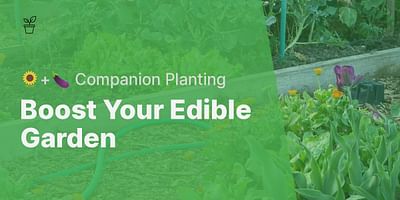Bradford Hudson, a devoted farmer and writer, has spent over two decades mastering the art of companion planting. Convinced of the crucial role it plays in sustainable farming, he is fervently dedicated to spreading awareness and knowledge about it.
Improving soil that isn't suitable for growing plants is a common challenge for many gardeners. Luckily, there are several natural and organic methods you can use to make your soil more fertile and conducive to plant growth. Here are some steps you can take to improve your soil and create a thriving garden:
1. Test your soil: Before making any amendments, it's important to understand the composition of your soil. You can purchase a soil testing kit from a garden center or send a sample to a local agricultural extension office for analysis. This will help you determine the pH level, nutrient deficiencies, and other factors that may be affecting plant growth.
2. Amend the soil: Based on the results of your soil test, you can add amendments to improve its fertility. Organic matter, such as compost or well-rotted manure, is a great option for most soils. It helps improve soil structure, retains moisture, and provides essential nutrients. Spread a layer of compost or manure over the soil surface and mix it in thoroughly using a garden fork or tiller.
3. Consider soil pH: Soil pH plays a crucial role in plant health. Most plants prefer a slightly acidic to neutral pH range (around 6.0 to 7.0). If your soil is too acidic (low pH) or alkaline (high pH), you can adjust it using organic amendments. For acidic soil, add lime or wood ash to raise the pH. To lower the pH of alkaline soil, incorporate elemental sulfur or organic materials like pine needles or coffee grounds.
4. Use cover crops: Cover crops are plants that are grown specifically to improve soil health. They help prevent erosion, suppress weeds, and add organic matter when tilled into the soil. Some popular cover crops include clover, buckwheat, and winter rye. Plant cover crops in areas where you're not currently growing plants, and then till them into the soil before they flower or seed.
5. Practice crop rotation: Crop rotation is a technique where you change the location of your plants each year to prevent the buildup of pests and diseases. It also helps balance nutrient levels in the soil. For example, if you grew tomatoes in one area this year, plant them in a different spot next year. This helps break the pest and disease cycle and allows the soil to replenish nutrients.
6. Consider companion planting: Companion planting is the practice of growing certain plants together to benefit each other. Some plants have natural pest-repellent properties or help improve soil fertility. For example, planting legumes like beans or peas can add nitrogen to the soil, benefiting neighboring plants. Research companion planting combinations that work well for the plants you want to grow.
Remember, improving soil fertility takes time and patience. It's important to regularly monitor your soil's health and make adjustments as needed. By following these natural and organic methods, you can gradually transform your soil into a nutrient-rich environment that supports healthy plant growth. Happy gardening!
For more information on soil improvement and companion planting, be sure to check out our website, Helper Plant. We have a wealth of resources and guides to help you create a thriving garden.













